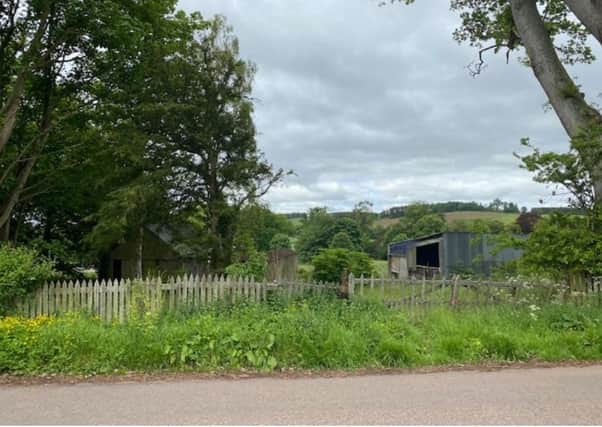Bid to build home on Earlston sawmill site rejected on appeal


Factor Francis Peto’s application for consent for a three-bedroom house on disused land within his Cowdenknowes estate was rejected by Scottish Border Council planning officers under delegated powers in January.
He appealed against that decision to the council’s local review body, but its members, meeting via video-link yesterday, July 15, upheld that knockback.
Advertisement
Hide AdAdvertisement
Hide AdThey too took the view that the design of the building would be too contemporary for its rural setting and that it wouldn’t be in keeping with the architecture of other buildings on the estate, including a mansion, gardener’s cottage and lodge house.
In support of Mr Peto’s application, Galashiels-based Aitken Turnbull Architects cited several existing modernist homes in the Borders in rural settings, including High Sunderland near Selkirk, Little Lindisfarne in Hawick, the Wave in the Manor Valley near Peebles and Pyatshaw near Lauder.
A previous application for a house on the same site was approved in principle in 2004 and in detail in 2007, but a different design was given the thumbs-down in 2018.
Mr Peto’s latest application, reverting to the original design given the go-ahead 13 years ago, was also refused in January on the basis that the site does not lie within an existing building group.
Advertisement
Hide AdAdvertisement
Hide AdJedburgh councillor Scott Hamilton said he now accepts that there is a building group there and that there is potential for a house to be built on the former sawmill site but it would be important to get the design right.
He said: “We agree that there is a building group here, that it is within an old estate, so we can agree that the estate could hold a house, but you can’t put something there that is not part of the estate, not part of the same design and features. You can’t have your cake and eat it.
“Another house here could work. However, it has to be designed in keeping with the other houses.”
East Berwickshire councillor Helen Laing agreed, saying: “Looking at the other buildings and the design proposed, I am not convinced that it would fit in. It is suburban. The artificial slates and uPVC windows do not seem to fit in.
Advertisement
Hide AdAdvertisement
Hide Ad“I would like to see something a little more specialist in terms of design on that plot.”
Hawick and Denholm councillor Clair Ramage felt likewise, saying: “The current design put forward doesn’t fit the sense of place.
“The design is not appropriate and not related and sympathetic to the other houses in that area.”
Kelso councillor Simon Mountford said: “I agree that there is a building group there and capacity to extend it.
Advertisement
Hide AdAdvertisement
Hide Ad“I could be persuaded that it forms part of the building group, but it all comes down to the proposed design.
“The architecture does not match the sense of place, so I uphold the officers’ decision.”
East Berwickshire councillor Jim Fullarton said: “I think it is quite a challenge to get the right house in that position.
“I was originally going for an approval on this until I saw the setting.
Advertisement
Hide AdAdvertisement
Hide Ad“There is a building group, but to get the context right, the design has to be right.”
The committee’s chairman, Leaderdale and Melrose councillor Tom Miers, said: “It is possible to apply contemporary design and get it right, but I am not sure this one does.”
Hawick and Denholm councillor Neil Richards added: “The design is not quite in keeping with the rest of the area. It looks a bit suburban.”
A supporting statement from Aitken Turnbull Architects pointed out that the plans for the two-storey home had garnered support from Earlston Community Council and had sparked no objections from statutory consultees.